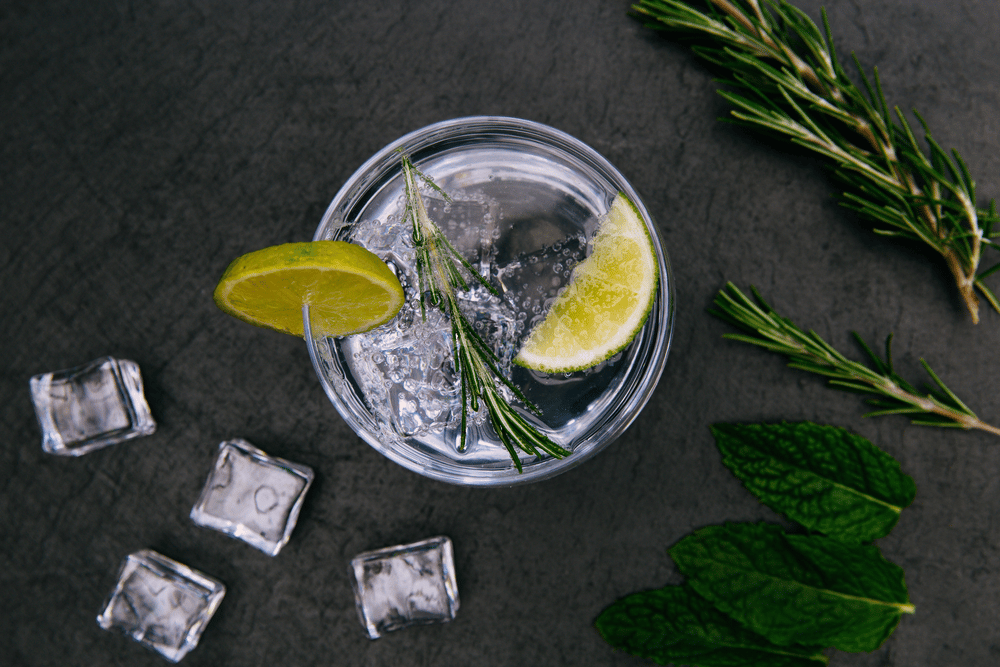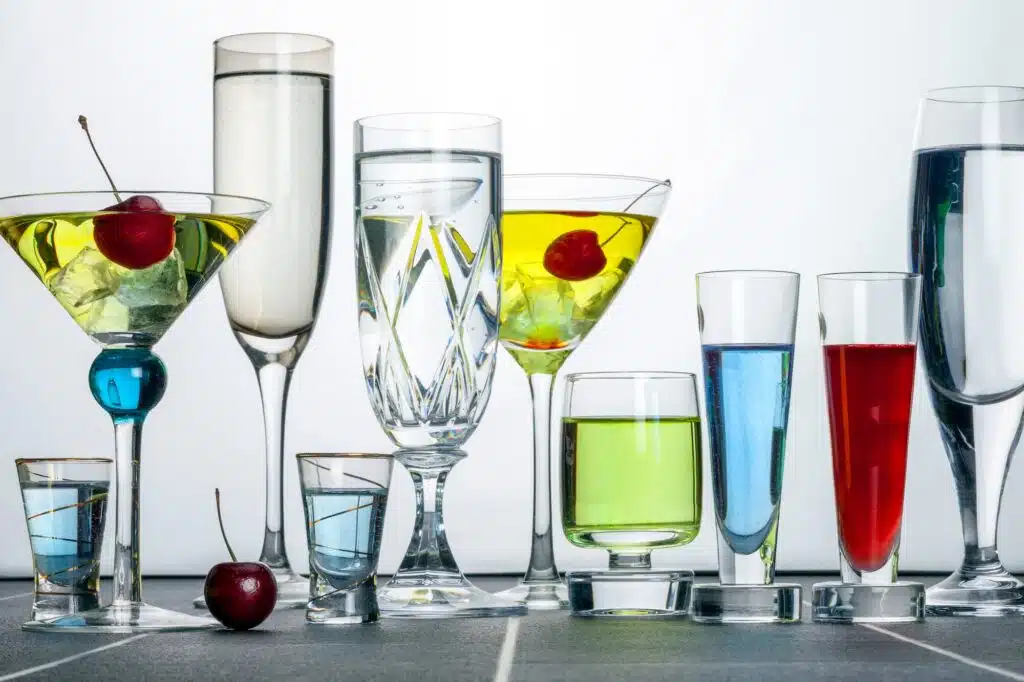Gin is a drink that’s been gaining more attention in recent years. Since its conception back in the eleventh century, when it was revered for its medicinal properties, gin has been a unique and versatile drink that has something for everyone to appreciate. From its initial boom in popularity in England back in the 17th century, different types of gin have sprung up all over the world. We can enjoy this drink anywhere now, but where did gin initially develop?
Even though it’s been around for so long, gin’s mainstream popularity didn’t reach its current level of fame until recently. We’ll enlighten you on gin’s origins, how it’s made, and what kinds of gin there are. We will also discuss the unique ingredient combinations and possibilities out there.
Where Did Gin Originate?
We have Europe to thank for this prestigious spirit. Gin became known for its medicinal properties initially and was made by monks in the Netherlands and southern Italy. It was conceptualized because it was the best way to make medicine out of the abundance of juniper there. Gin gained its notoriety in England thanks to its Belgian medicinal sister, jenever liquor. England proudly proclaimed gin to be its drink of choice after the 1688 Glorious Revolution.
After all this time, gin has made the rounds worldwide and gained unique styles and brands along the way. Over time, various territories worldwide began experimenting with floral, fruity, spicy, or herbal mixtures. This made gin a unique beverage that would always reflect the flavors of where it was made.
How Did Gin Get Its Name?
The word “gin” is a shortened version of the word “genever,” an English word derived from the Dutch word “jenever.” These words are both derived from the Latin word “juniperus,” meaning juniper.
How Is Gin Made?
The traditional way of making gin has held up well over the years. It is still favored despite the new and unique ways gin can be made nowadays. Using juniper and other botanicals, distillers will typically start with a one-to-one ratio of natural spirit alcohol and water. They will then add the desired botanical mix. This mixture is steeped in a pot for 48 hours so that the distillation process can run its natural course.
Though this is the simple version, any step of this process can be modified to fit the distiller’s desired results. The ratio doesn’t have to be one-to-one, and any mixture of botanicals can be used. Juniper usually lies at the heart of the mix, however, because juniper berries are what give gin its unique taste.
Other Methods of Making Gin
Vaporizing
Rather than mix the botanicals in with the spirit to steep, this method keeps the botanicals separate. Instead, your spices and ingredients are put into baskets within the pot still. The ingredients inside the baskets are then vaporized, and this vapor fuses into the spirit. This method is primarily preferred by those who enjoy more subtle flavors.
Individual Distillation
This is the newest method and has risen in popularity quite a bit in recent years. Each ingredient is boiled and steeped individually rather than all together. While this may take more time and require more work, those who enjoy experimenting with different flavors will benefit greatly from this way of distilling.
Popular Botanicals Used in Different Types of Gin
Almonds
Almonds can add a pleasant note to any gin mixture. During the distillation process, the almonds will break down until they’re crushed into a fine powder. This allows them to mix into the spirit undetected, with nothing left behind besides the flavor. The addition of almonds results in your gin possessing either a sweet or bitter flavor, depending on which type of almond you use.
Angelica Root
This is one of the most popular roots distillers use in their gin recipes. Angelica gives the gin an earthy and medicinal flavor but also binds the other botanical flavors together.
Black Pepper
This is a great ingredient for those who like their gin with a sour taste. A little goes a long way with this ingredient, and other botanicals can offer unique flavor experiences when paired with black pepper. Gin enthusiasts often say black pepper makes the flavor much more noticeable, like an explosion of taste. Most distillers favor black pepper with citrus fruits or lemon grass, as the combination of tangy and bitter creates an experience you won’t soon forget.
Citrus
A key ingredient for a fruity-flavored gin, citrus is one of the most popular fruit choices for this spirit. This is because citrus fruits produce a tart, sour flavor during the distilling process. This flavor creates a well-blended synergy with the spirit alcohol. Citrus also offers a refreshing twist to your gin.
Coriander
Besides juniper berries, coriander is one of the most popular ingredients of gin. Where juniper berries grant gin with its signature taste, coriander is responsible for its signature aroma. These cilantro plant seeds are what often give gin such distinct flavors when you sample from different parts of the world. Coriander from places such as Asia produces a gin with a more fruity flavor, while seeds from places like Spain will be spicy and citrus-esque.
In the hands of a skilled distiller, coriander can be quite a powerful weapon. Its complex flavoring is nuanced and can lean more towards spicy, nutty, or fruity depending on additional ingredients and distilling methods. A distiller might introduce citrus to bring forth the fruity flavors of coriander or might add in almonds for an overall balanced bittersweet taste.
Cucumber
Cucumber is a fan favorite for those stifling summer days. Cucumber offers a refreshing flavor that quenches thirst and mixes well with the natural juniper berry flavor of gin.
Licorice
For those who enjoy sweeter gin, powdered licorice root is a must-have ingredient. It’s the most popular sweetener used in different types of gin and gives the drink a note of anise flavoring. Many distillers favor licorice for its tendency to raise the viscosity of the gin. This gives the drink a more oily texture akin to syrup.
Orris Root
Orris is a great stabilizer and balancer, making sure no one flavor dominates the taste. It’s widely agreed that orris root adds an earthy yet sweet undertone to the smell and taste of the drink.
What Are the Different Types of Gin?
Genever
Some people believe this is the “original” gin from all the way back in the 16th century. This type uses less juniper, coriander, citrus, and roots than the other three. Gin enthusiasts often say Genever possesses a whiskey-like taste and is stronger overall. This is because Genever is made with a malt spirit and a week’s fermentation before any botanicals are added.
London Dry
True to its name, London Dry was invented in England. It would quickly grow to become one of the most popular of the different types of gin in the world. Juniper is the number-one ingredient, making up more than 50% of the botanical mixture. The remaining percentage goes predominantly to coriander but also usually includes angelica roots and citrus.
The amount of each ingredient can be modified to balance the aroma and flavoring. Extra citrus may be added for a more tart gin, or black pepper can be included to make the existing flavors pop. When most people think of traditional-tasting gin, it’s London Dry they’re likely thinking of. London Dry is the type of gin used in the famous Gin and Tonic cocktail and the traditional Martini, making it a staple in the gin world.
Old Tom
If you have more of a sweet tooth, this one’s for you. Old Tom gin got its endearing nickname back in the 18th century. During those times, many people took it upon themselves to make gin of their own, and they’d often use artificial sweeteners in their concoctions. Old Tom was manufactured in honor of those times.
Since then, Old Tom has perfected his taste with expertly distilled licorice for a one-of-a-kind flavor experience. Licorice was chosen to pay homage to people’s favorite choice of homemade gin-sweetener back then. Those who favor Tom often pair him with a bitter cocktail for a balanced taste.
Plymouth
Of all the different types of gin, Plymouth gin holds the most historical significance. If you’ve ever heard of the Savoy Cocktail Book, Plymouth gin was actually mentioned in this work. Like London Dry, this gin got its start in England as well. The distillery that makes Plymouth gin remains to this day the only distillery in Plymouth city since it opened in 1793. This gin distillery location also happens to be the only Plymouth brand distillery in the world.
With a more complex ingredient list, it offers a unique blend of flavors that stays on the dryer side. In addition to juniper, coriander, angelica root, and citrus, Plymouth also contains cardamom and orris root. Many who drink this gin report an invigorating, spicier flavor.
We hope we have provided you with some insight into this modern-day favorite and its unique origins. Appreciation for gin grows every day thanks to its versatility and endless flavor possibilities. We can guarantee you’ll have a new admiration for gin when you try out our best-quality in-house stock. Visit us for our next happy hour here at Town’s End Stillhouse for the best gin-tasting experience you’ll ever encounter!




